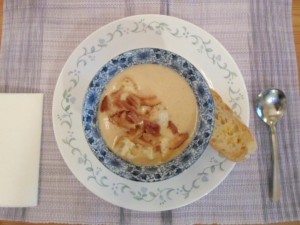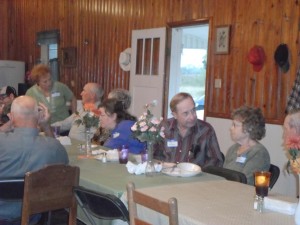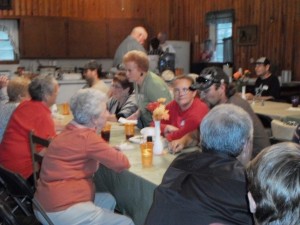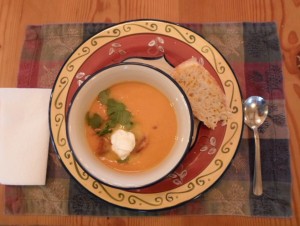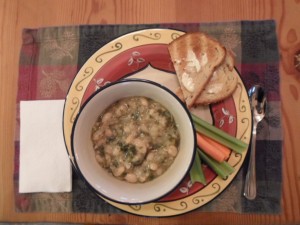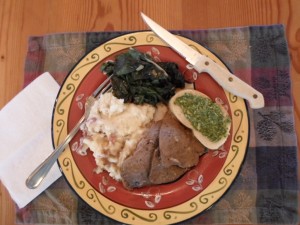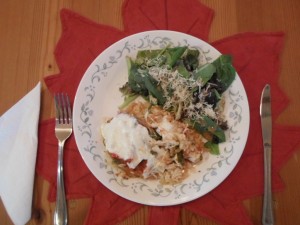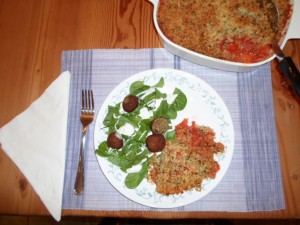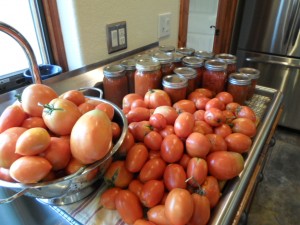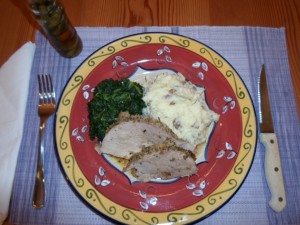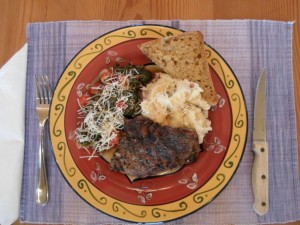Mise en place (meez on plaus) is a French phrase meaning to “put in place.” Some recipes require almost constant attention and/or the process moves so quickly that the chef doesn’t have time to prep ingredients while cooking the dish. Mise en place encourages having ingredients prepped, measured, lined up and ready to go. Equipment – like a pot, spatula and immersion blender – is set out and at hand.
I made an incredibly rich and creamy beer-cheese soup that required constant stirring and heat management. With everything in place beforehand, the recipe went smoothly.
So, let’s start with mise en place:
• Fry 8-10 slices of bacon (or the entire package) – I often bake bacon in a 350-degree oven on a wire rack over a sheet pan – less mess. Reserve about 3 tablespoons of the grease.
• Measure 4 tablespoons of butter.
• Dice a couple of onions, 4-5 carrots and 4-5 celery ribs.
• Mince 6 cloves of garlic.
• Set out a cup of flour.
• Measure 2 cups of beer. I used amber ale. I’m not much of a beer drinker, but I tasted the ale first and it was pretty good. Don’t use a beer you don’t like. All the alcohol will be cooked out and it will have a fantastic flavor.
• Set out a quart of milk and a quart of chicken broth. Both need to be warmed since adding cold liquid will slow down the process.
• Get the bottle of Worcestershire sauce out of the fridge. About 2 tablespoons is needed, but just eyeball that amount.
• Shred 2.5 lbs. – yes, that’s right – of cheddar cheese. I used a combination of extra-sharp and mild cheddar, because that’s what I had.
• Of course, have salt and pepper ready for seasoning the soup.
• You’ll need a large heavy-bottomed pot and lid, a large spoon for stirring and an immersion blender. If you don’t have an immersion blender, put it on your Christmas list. I use mine all the time.
Now that everything is in its place, begin by heating the reserved bacon grease and butter in the pot over medium heat. Add the onions, carrots and celery – season lightly with salt and pepper. Cook covered for about 20 minutes, stirring occasionally. Then add the garlic and cook for about a minute.
The almost constant stirring begins as you add the flour and cook for a few minutes until it is incorporated with the vegetables. Add the beer and keep stirring. Once that’s blended in, add the milk, chicken broth and Worcestershire sauce and turn the heat up to medium-high. Keep stirring and bring the liquid to a simmer. Then turn the heat down to medium-low and simmer for about 10 minutes – and don’t forget to stir.
Purée with an immersion blender directly in the pot. A blender or food processor can be used, but you’ll need to let the liquid cool first and then bring it back up to heat before the next step.
With the pot over medium-low heat, add the cheese slowly and stir constantly. Never let the liquid come to a boil while adding the cheese. Taste the soup and season with salt and pepper. Serve with crusty bread or croutons, bacon, carrot or celery sticks, apple slices or anything that can be dipped. The soup is so smooth and creamy, it’s like a fondue.

